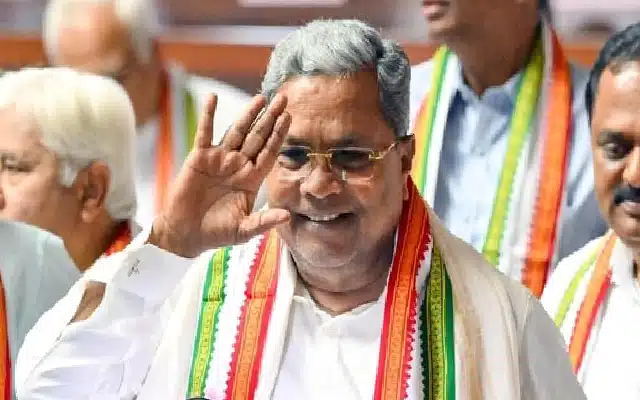
Part 2 of the unfolding migrant worker crisis: Home is where the heart is
NDTV reported yesterday that fifteen migrant workers in a group of 20 were killed after a cargo train ran over them while they were sleeping on the tracks in Maharashtra’s Aurangabad yesterday morning, the railways said. The migrants were walking from Jalna to Bhusaval, 157 km apart. This is despite the special trains set up by the government to commute migrants to their home towns – there are so many of them that some have had to walk either because they couldn’t buy the tickets or they were not available. Their food was scattered all over the tracks. It made for tragic viewing. In Mangaluru, thousands gathered at the railway station, on rumors of trains being available to travel to their home towns. But permissions were required from their home states and they too were delaying it fearing a rise in Corona Virus cases on their return. Around 1200 boarded a train today at Mangalore. They have become India’s Nowhere people.
The Stranded Workers Action Network (Swan), a group of researchers working on the implementation of the rural job scheme, commenced its relief work on March 27th and released a report based on their work in the field after 32 days of lockdown. “This report should be understood as a compendium of testimonies of stranded migrant workers that have been systematically documented as part of the relief work.” A total of 16,863 workers reached out to them and form part of this report. According to the report, the average daily wages of those who reached out to them are Rs. 380. The median daily wages are Rs. 365. About 43 percent of those are originally from Bihar, about 27 percent are from Jharkhand, about 12 percent are from Karnataka and about 6 percent are from West Bengal.
Key findings include the fact that food distress is still high, and 50% of workers had rations left for less than 1 day. About 72 percent of the workers said their rations will finish in 2 days. 4 out of 5 workers who reached out do not have access to government rations while 68% still do not have access to cooked food. Significantly With no cash-relief for migrants, 64% have less than Rs: 100 left with them. With no change since April 14th, about 78 percent of people have H300 or less left with them and 74 percent of people have Rs200 or less left with them.
64 percent of people have less than Rs 100 left with them. Sadly more than 97 percent (out of 10,383) have not received any cash relief from the government. As on April 26th, only about 6% of all those who have reached out to us have received their full wages during the lockdown. About 78% have not been paid at all. This excludes the self-employed workers. More than 99%of the self-employed have had no earnings during this period. These include street vendors, rickshaw pullers. Significantly, Post-lockdown 41% said they will stay because they are anxious about unpaid rent, loans, and no cash to travel or survive even at home. This figure must have gone up in the days after April 26th and after the announcements by the government.
But the government disagrees – the Government of India’s Status Report says “In view of the aforesaid package (Pradhan Mantri Garib Kalyan Yojana (PMGKY)) which takes care of the daily needs of every poor person which includes migrant workers as well as their respective families in their original villages, there was no necessity for migration workers to rush to their villages who started shifting from their place of occupation to their place of residence. Their daily needs were being taken care of wherever they were working and the daily needs of their family members were being taken care of in their respective villages.”
The principles of free migration are enshrined in clauses (d) and (e) of Article 19(1) of the Indian Constitution and guarantee all citizens the fundamental right to move freely throughout the territory of India, as well as reside and settle in any part of India. Evidence has it that internal migration augments the economy.
There are 139 million internal interstate migrants in India – this, according to the 2011 census. This is 35% of India’s workforce of 400 million according to the 2011 census. We are now in 2020 and that figure has gone up substantially as climate change changed monsoon patterns, crops failed, loans mounted and the workforce expanded by demographic infusion. Meanwhile, city life and amenities were hyped as an alternative – No effort was made to take urban amenities and infrastructure to the village. With starry eyes and hope of a bright future, they reached their promised lands. The reality for the migrants was different from what they heard or were told. And this is just beginning to dawn on them.
They are recruited from villages through an elaborate network of contractors akin to human trafficking that works on the premise of supply and demand. The result – absolute exploitation. The contract labor system that is sought to be regulated by law is loosely monitored by the state apparatus in the pursuit of employment and a robust GDP has only helped strengthen this unhealthy system. It is therefore but natural, that they wanted to go home once their jobs were kept on hold and incomes dried up. And governments, their cronies and entrepreneurs only have themselves to blame.
Migrant work starts early – Between 14-20 years – They enter the Manual labor market brought into it by labor contractors through family members already working with them and they act as secondary wage earners supporting parents/family members. Between the ages of 21 and 27 they begin to do what their parents do – Hard manual labor – around 12 hours per day and become primary wage earners. They get married and start their own families hoping for a better future. Then the natural exodus begins. Hard work, substance abuse, emotional instability, and alien cultures begin to take their toll and they have frequent health episodes – they return to their villages often absenting themselves from work on the pretext of illness. At the age of 40, many of them return to their villages and barely eke out a living, while the children then are drawn to the same work by the same contractors. It is an endless vicious cycle.
State governments are mandated to take care of “guest workers”. But they are apathetic to their plight as they cater to domestic audiences and emotions. Measures are enshrined in various legislative measures brought about by the Centre and the states but the implementation is dictated by local politics and is almost always tardy.
Uttar Pradesh and Bihar are the biggest source states, followed closely by Madhya Pradesh, Punjab, Rajasthan, Uttarakhand, Jammu and Kashmir, and West Bengal; the major destination states are Delhi, Maharashtra, Tamil Nadu, Gujarat, Andhra Pradesh, and Kerala. Most migrants work in low-paying, hazardous, and informal market jobs in key sectors in urban destinations, such as construction, hotel, textile, manufacturing, transportation, services, domestic work, Saloons, drivers, Logistics mostly doing hard manual labor. Success stories are few and far between.
Almost all these industries have shut down due to the Covid19 Lockdown. These industries turn the wheels of the economy and that is why states and the center are keen that the Guest workers remain where they are to kick start the economy. But is it fair to expect them to stay back so that the state and the Entrepreneurs who employ them can get on with their lives after a brief hiatus?
Perhaps it would be a fair expectation if they were looked after well while they were working or during the lockdown. The fact is they were not. Most of them are not directly employed by entrepreneurs who are today clamoring for their retention. Most of them even forsake them as they were not their employees as they are subcontracted. An employer told the TOI, that many have been working for one industry for more than three decades, says the migrant workers want to go back, as they are hurt by their employers’ treatment during the lockdown. “They consider this place as a second home, but we have not looked after them well during the lockdown, except for some employers. In simple terms, many employers washed their hands of the workers when the lockdown was announced, and the workers suffered without money, food, and rations. They were suddenly shown sympathy when the lockdown was relaxed. This was noticed by them, and they have decided to return to their native places, as they were hurt by our treatment,” he said.
Besides their fear of the Virus attacking them in an alien place, they have now realized they are on their own. They were no guardian angels in this cruel system barring a few good samaritans. It is then that it dawned on them that there is no place like home, no matter where it is and how bad the conditions there, are. Home is where their hearts are.
Their exodus is also driven by hunger. One 39-year-old, who set off on foot from Delhi to his hometown in Madhya Pradesh, collapsed and died after walking around 200 kilometers. He had worked at a restaurant in Delhi that closed due to the spread of COVID-19. Another migrant, who had subsisted on just one meal in two days, told a reporter wryly: “If coronavirus doesn’t kill us, hunger will!”
Money talks most of the time, but not this time. This time Home is where the heart is, where the head can be held high, and fear is not the key to life. Their lives have always been the BEST- Blood, Entreaty, Sweat, and Tears. The latter is now being shed by their employers, and if they want to survive, they too will need to sweat it out. The saga is just beginning as states compete with each other to suspend existing labor laws through ordinances to draw investments and facilitate employment that would not come back to bite another day. And that is the subject for part III of this saga.


















